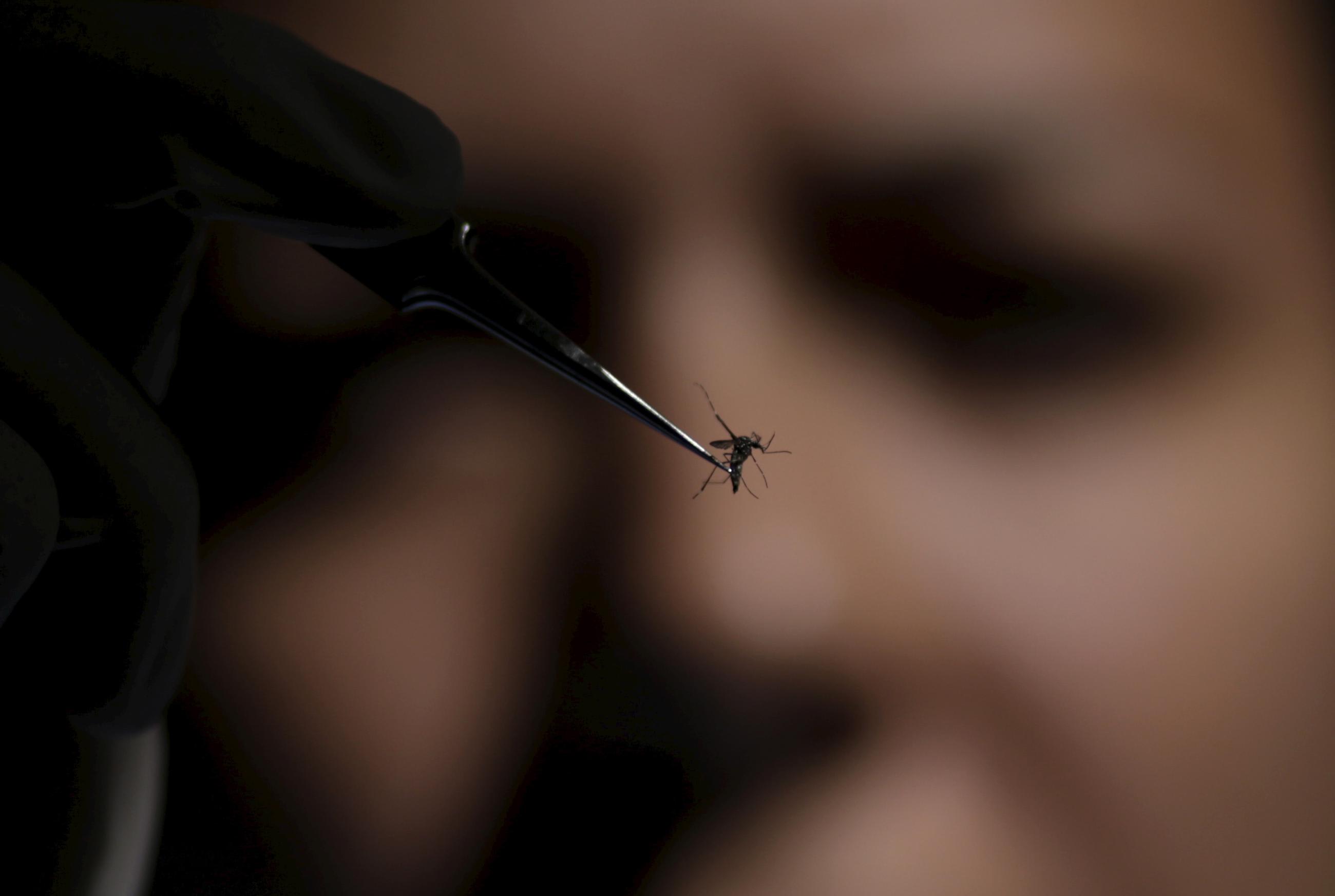Oropouche, a viral disease that has historically received little press coverage, is now emerging as a significant public health concern in Latin America.
Traditionally confined to the Amazon Basin, the Oropouche virus has rapidly barreled through the region since a genetic mutation enhanced the virus's ability to spread in 2015. Brazil alone reported more than 8,000 cases this year as of late October, a dramatic rise from fewer than 900 cases in 2023. Neighboring countries including Bolivia, Colombia, and Peru are also witnessing similar infection surges, and Cuba reported its first case in mid-2024.
Experts are now sounding the alarm that Oropouche could soon become as common as diseases such as chikungunya, dengue, or Zika as deforestation, climate change, and urbanization accelerate the virus's rapid spread. The situation underscores the urgent need for global collaboration in combating this growing threat.
A Growing Health Threat
Oropouche fever is a zoonotic disease, meaning it can be transmitted from animals to humans. It is sometimes known as sloth fever because scientists first detected the virus in sloths and believed that the animals had a significant role in its spread. The primary transmission vector, however, is a small, tropical-biting midge (Culicoides paraensis) that becomes a carrier once it bites an infected animal or human and then bites another healthy person, spreading the virus. Some mosquito species can also spread the virus.
Urbanization and deforestation can bring wildlife closer to human settlements
Most infected individuals have mild to moderate symptoms, including the abrupt onset of high fever above 38°C (100°F), headaches, muscle pains, chills, and nausea. In some cases, however, the virus can cause neurological symptoms, including lightheadedness, cognitive problems, and brain inflammation. The symptoms typically begin three to 10 days after infection and last for two to seven days. Up to 60% of patients may experience symptom relapse a few days or weeks later.
As the virus spreads to more densely populated areas, concerns are growing about its potential to overwhelm health-care systems, especially in regions where resources are already scarce.
Viral Evolution and Its Spread
In late 2022, Brazilian officials detected the ongoing outbreak's first case in the northern Roraima state. The virus has since traveled to major metropolitan areas, among them Bahia, Minas Gerais, and Rio de Janeiro. Although some early cases were linked to travel in the Amazon, many new patients had no contact with the rainforest, confirming that the virus is now circulating locally in Brazil's cities.
Reports published in The Lancet Infectious Diseases and Nature Medicine earlier this year offer insight into how a genetic reassortment—when different virus strains combine to create more virulent variants—alongside urbanization and deforestation led to the extraordinary growth and dispersal of the Oropouche virus in Brazil's western Amazon region. Those trends complicate efforts to control the outbreak as new strains emerge in various parts of South America.
The Role of Deforestation and Climate Change
Urbanization and deforestation can bring wildlife closer to human settlements, creating a suitable environment for reproducing midges that carry the Oropouche virus, reports a recent study. Although the virus lives in the warm, humid temperature of the Amazon, human activities and deforestation raise the risk by closing the gap between humans and the transmitting midges. Increased human mobility, climate change, and rapid urbanization are also associated with expanding the midge's habitat and generating new urban transmission hotspots.
Climate change further amplifies this problem. Rising global temperatures allow the midge to reach maturity faster, and increased rainfall and flooding provide more breeding grounds. This perfect storm of environmental factors has facilitated Oropouche's expansion; a 2023 study estimates that up to 5 million people across the Americas could soon be at risk.

Transmission During Pregnancy: A New Concern
Recent research has raised alarms about the potential for transmission between pregnant women and their unborn children. As of mid-October 2024, Brazil reported 13 fetal deaths, three spontaneous miscarriages, and four cases of congenital anomalies, all due to Oropouche infection, according to a report from the Pan American Health Organization/World Health Organization (PAHO/WHO).
A separate study by the Evandro Chagas Institute identified Oropouche virus antibodies in the cerebrospinal fluid of one newborn with microcephaly, a condition that causes a baby's head to be smaller than expected and is often associated with developmental delays and neurological issues. More research, however, is needed to establish a direct link between Oropouche infection during pregnancy and fetal abnormalities.
The Challenges of Diagnosis and Treatment
Oropouche fever symptoms can be mistaken for those of numerous other tropical illnesses, making diagnosis extremely difficult and frequently resulting in misdiagnoses. Acute Oropouche virus infections are often linked to dengue virus in Colombia and Peru. Coinfections of Oropouche variants with genetic mutation have not been documented, but coinfections with Zika and chikungunya have occurred , and even triple coinfection with all three. How these coinfections affect disease severity, however, remains unclear and requires further study.
The most accurate method for identifying the Oropouche virus is molecular testing, such as polymerase chain reaction, which detects viral RNA and must be performed within five days of symptom onset. However, these tests are not widely available, especially in rural regions, leading to underdiagnosis and inaccurate reporting of cases. Treatment for Oropouche viral disease involves supportive care, rest, fluids, and over-the-counter medications, though patients with severe symptoms should be hospitalized for close observation.
The international outbreak is not just a health issue but also a socioeconomic one
The Pan American Health Organization has called for enhanced surveillance across Latin America in response to the growing outbreak. Brazil's Ministry of Health has already implemented new recommendations by creating a strategic framework to control and reduce the incidence of the disease across Brazil. Specific actions include strengthening surveillance through strategic sites, incorporating genomic and metagenomic technologies for early detection, improving vector control measures like disseminating midge-killing larvicides, and fostering public health education.
In hopes of managing severe cases in the future, researchers are exploring potential antiviral treatments. Yet the best form of protection is preventing bites from midges and mosquitos by using insect repellent, installing window and door screens, and wearing loose-fitting clothing that covers the arms and legs.
Urgent Need for Global Collaboration
The international outbreak is not just a health issue but also a socioeconomic one. In low-income, rural areas, where many people depend on physical labor, missing work due to illness can lead to financial hardship. Even a brief sickness can have long-term economic effects in areas where families are already at risk of economic insecurity. The continuing chikungunya, dengue, and Zika epidemics financially strain health-care systems and exacerbate this insecurity.
The cost of treating these diseases is high. In Brazil alone, the 2016 national health budget devoted almost 2% of its funds to the fight against arboviruses. The indirect costs of productivity loss due to chikungunya and Zika amounted to approximately $429 million and $48 million, respectively, and direct medical expenses for both diseases reached $291 million.
Although Oropouche is not usually fatal, it can cause long-term neurological and cognitive impairments, further burdening Brazil's health-care systems. To tackle these issues, optimal disease surveillance and control techniques are necessary alongside socioeconomic, hygienic, and climatic considerations.
Addressing the spread of Oropouche fever will require coordinated international efforts, given that imported cases are already being reported outside Latin America, including in the United States, Germany, Italy, and Spain. More funding is necessary not only to study the virus's ecology and transmission, but also to develop vaccines and antiviral treatments. Equally important are initiatives to curb deforestation and mitigate the impacts of climate change—two factors driving Oropouche's expansion.
Some current initiatives to curb deforestation are the Brazil's Amazon Region Protected Areas program—one of the world's largest conservation efforts—which not only safeguards biodiversity but also combats illegal deforestation. Similarly, the Rural Environmental Registry promotes environmental compliance among landowners, aligning rural practices with sustainability goals.
Without global collaboration and immediate action to address these root causes, Oropouche fever is likely to continue spreading, with potentially devastating consequences for both public health and the environment.













